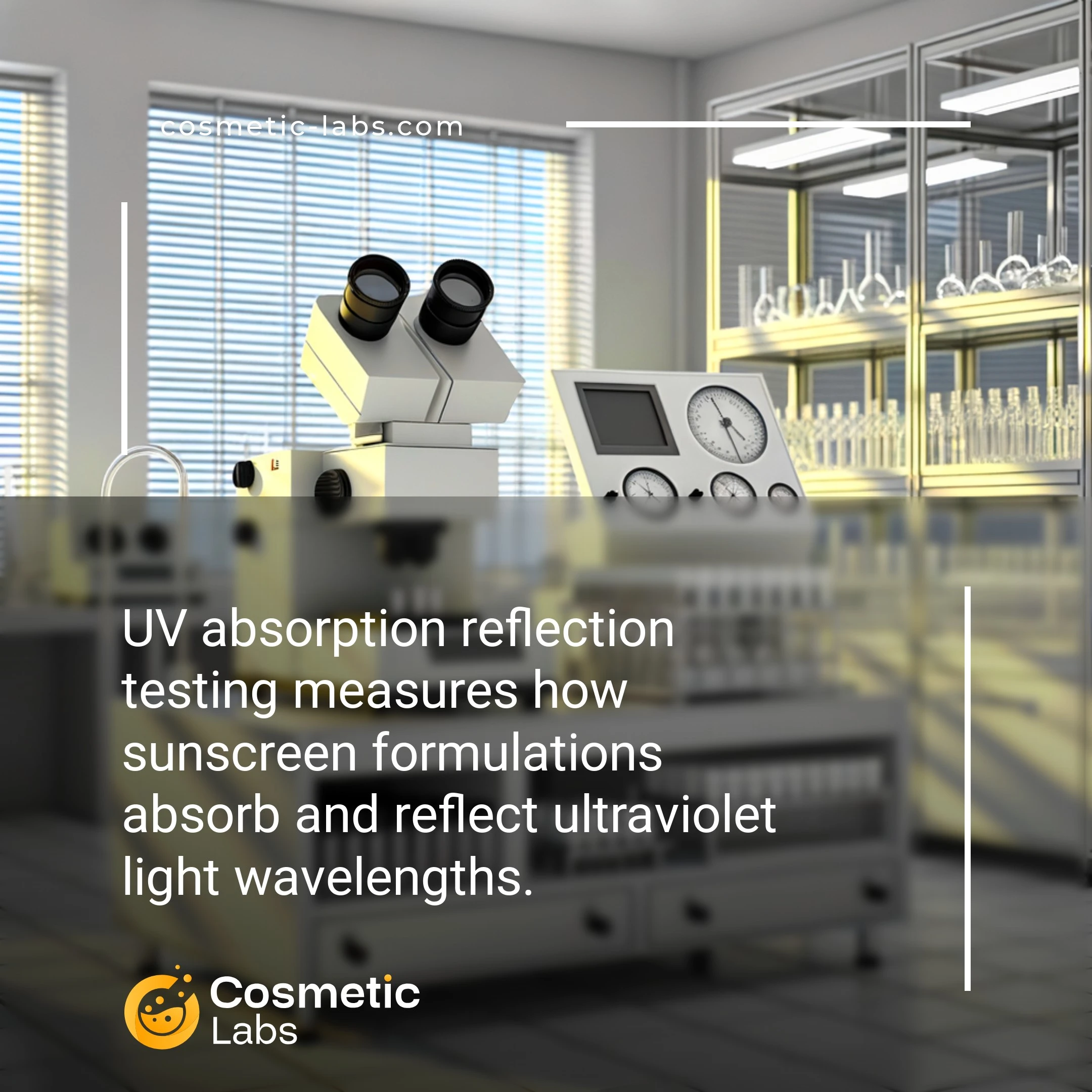UV Testing Services for Sunscreen & SPF Product Development

What is UV absorption reflection testing?
UV absorption reflection testing services measure how sunscreen formulations interact with ultraviolet radiation by analyzing both the amount of UV light absorbed by active ingredients and the percentage reflected off the skin’s surface. Labs use spectrophotometry equipment to generate precise SPF values and broad-spectrum protection data, with in vitro testing methods that simulate real-world sun exposure conditions. This dual-measurement approach reveals whether your formula achieves claimed protection levels before expensive clinical trials.
Why do you need this service?
Cosmetic labs use UV absorption reflection testing to validate SPF claims before product launch, helping brands avoid regulatory issues and costly reformulations. Teams measure how sunscreen formulations absorb and reflect UV radiation across different wavelengths, ensuring your products meet FDA labeling requirements and deliver promised protection levels to consumers.
Who provides UV absorption reflection testing services?
All cosmetic labs providing UV absorption reflection testing services
There is no company providing these services at the moment.
UV Absorption and Reflection Testing Services
UV absorption and reflection testing measures how sunscreen formulations interact with ultraviolet radiation to validate their protective capabilities. These laboratory assessments form the backbone of sun protection efficacy testing, providing the data needed to support SPF claims and regulatory submissions.
Spectrophotometric Analysis Methods
Labs use specialized UV-Vis spectrophotometers to measure how your formulations absorb and reflect UV radiation across the 290-400nm spectrum. This testing reveals absorption peaks, transmission rates, and reflection coefficients that determine protective performance.
Key measurements include:
- UVA absorption ratios (320-400nm)
- UVB protection levels (290-320nm)
- Critical wavelength determination
- Photostability under UV exposure
These tests help optimize active ingredient concentrations and identify formulation gaps before moving to human testing phases.
In-Vitro Substrate Testing
Professional labs apply your sunscreen formulations to standardized substrates like PMMA plates or synthetic skin models to simulate real-world application conditions. This approach provides consistent, reproducible data without the variables of human skin testing.
Testing protocols evaluate:
- Film thickness uniformity (2mg/cm²)
- UV transmission through applied films
- Water resistance simulation
- Temperature stability effects
Results from substrate testing predict in-vivo performance and help refine formulations before clinical trials. Partner with experienced labs on our platform to access validated testing protocols that meet international standards.
Practical Applications of UV Absorption Reflection Testing
Cosmetic labs use UV absorption reflection testing applications to validate sunscreen formulations and ensure accurate SPF claims across diverse product categories.
Sunscreen Formula Validation
Labs measure UV absorption patterns to verify that active ingredients like zinc oxide and titanium dioxide provide the claimed protection levels. Testing protocols analyze wavelength-specific absorption from 290-400nm to confirm broad-spectrum coverage. Results determine whether formulations meet FDA requirements for SPF 15, 30, or 50+ claims.
Brand owners receive detailed spectral data showing absorption peaks and valleys. This information helps reformulate products that show gaps in UV protection or validate successful formulations ready for human testing.
Product Development Optimization
Testing services evaluate how different concentrations of UV filters affect absorption profiles. Labs test multiple prototype formulations to identify the most effective combinations of chemical and mineral filters. Teams can compare absorption efficiency between organic filters like avobenzone and inorganic options like zinc oxide.
The data guides decisions about filter percentages, particle sizes, and coating technologies. Brands use these insights to create products that balance protection effectiveness with cosmetic elegance and consumer appeal.
| Test Parameter | Measurement Range | Application |
|---|---|---|
| UVA Absorption | 320-400nm | Anti-aging protection claims |
| UVB Absorption | 290-320nm | Sunburn prevention validation |
| Critical Wavelength | 370nm threshold | Broad-spectrum certification |
| Reflection Coefficient | 0-100% reflectance | Mineral filter effectiveness |
Connect with experienced cosmetic labs on our platform to access professional UV testing services for your sunscreen development projects.
